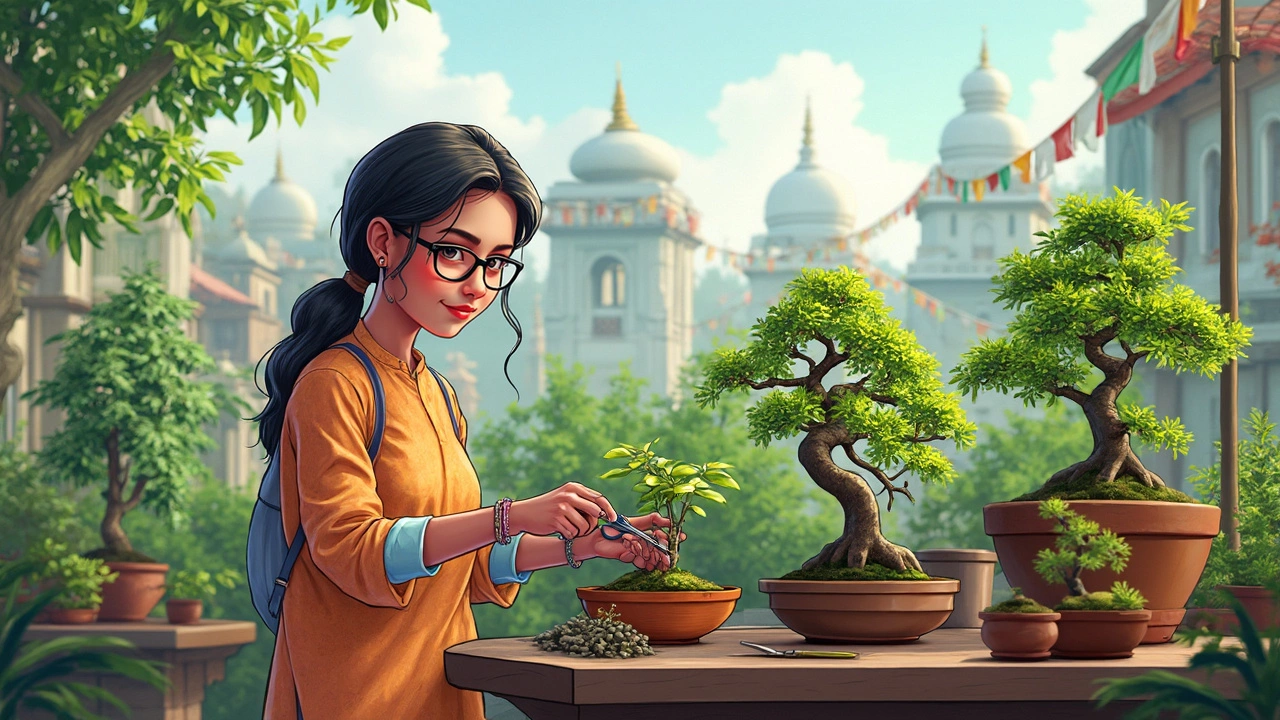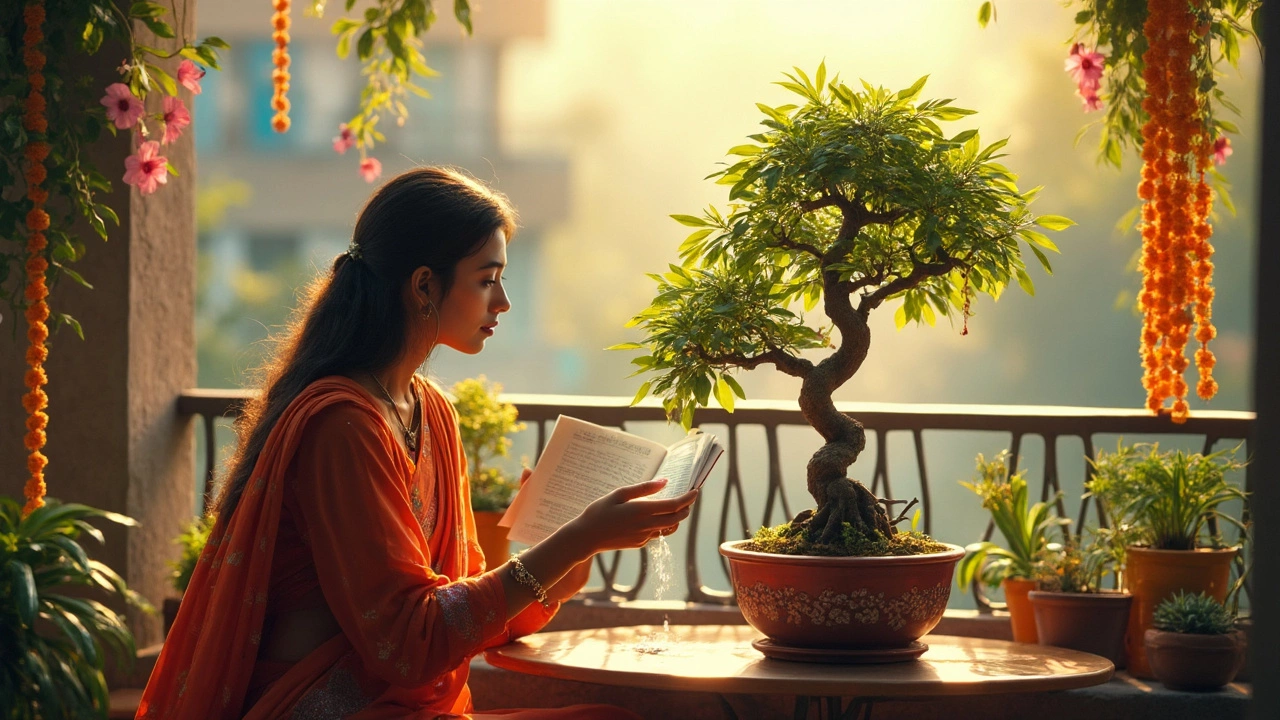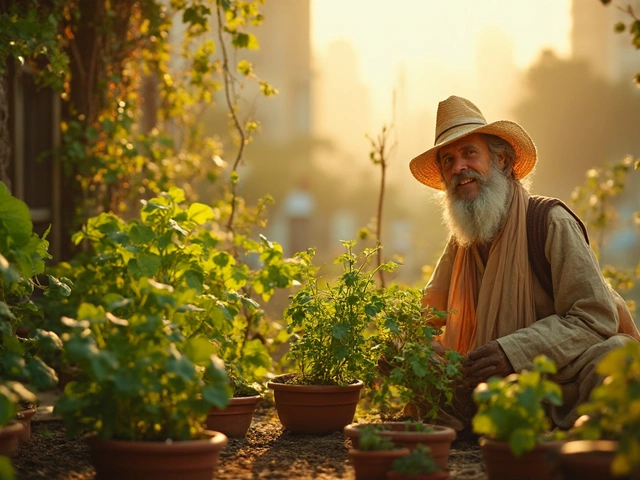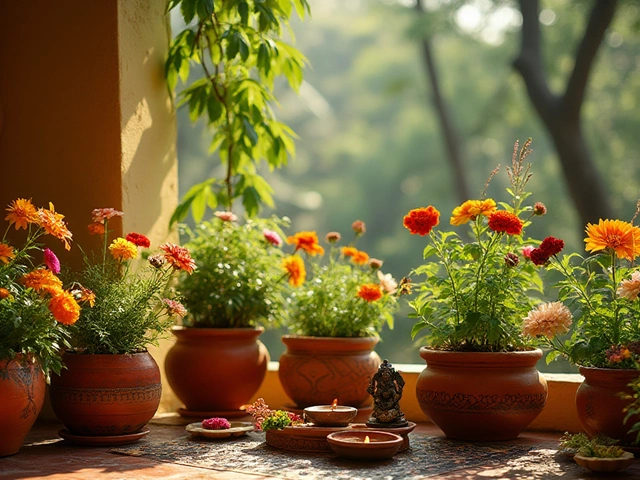Bonsai trees aren't just tiny plants in cute pots—they need regular care and a bit of planning to stay alive and healthy. But you don't need a green thumb or fancy equipment to get it right, even as a total beginner.
The very first thing to get straight: not all bonsai trees are the same, so finding out what type you have really matters. Some love the sun, some will fry in it. Some need daily water, others don't. One-size-fits-all advice will mess things up pretty fast.
Before you even water your bonsai for the first time, take a couple of minutes to check where you want to keep it. Sunlight is huge—most bonsais die indoors because they just don't get enough light. If you see weak, pale leaves, it's probably craving more sun. An east-facing window is a decent start, but a spot with some midday or afternoon light is even better. Outdoors can work too, if it’s not scorching hot or freezing. Basically, you want good light and no drastic drafts.
- Choosing the Right Bonsai and Spot
- Watering and Feeding Basics
- Trimming, Pruning, and Shaping
- Bonsai Troubleshooting and Common Issues
Choosing the Right Bonsai and Spot
If you’re just starting out, picking the right bonsai tree is half the battle. Some species simply don’t forgive rookie mistakes, while others are almost impossible to kill. Ficus and Jade are great starter trees—they bounce back after you mess up the watering or forget them for a week. Avoid pines, maples, or junipers until you get the hang of things. A local garden center usually has a clue about which trees do okay in your climate and home.
The spot you put your tree in can make or break your bonsai journey. Bonsais may look small, but they want as much light as a regular tree—sometimes even more because of the tiny container. If you stash your bonsai in a dark corner or someplace it never sees the sun, it’s going to struggle. Inside on a sunny windowsill is okay for most tropical species, but outdoor light is tough to beat for strength and color.
There’s a simple way to tell if your bonsai tree is getting enough light: keep an eye on new growth. Long, thin, pale shoots usually mean it’s reaching for more sun. If you see strong, compact growth, you’re doing fine. And don’t be scared to move your tree—just don’t shock it by slapping it straight from a shadowy room out into blazing sun.
Here’s a basic rule to follow when choosing a spot:
- Tropical bonsais (like Ficus, Jade, Chinese Elm) can live indoors, but aim for the sunniest spot you’ve got.
- Outdoor bonsais (like Juniper, Pine, Japanese Maple) need real daylight and a break from harsh afternoon sun if you’re in a hot area.
Watering habits also play into your spot. Windowsills dry out faster. Outdoor trees may need more protection from wind and crazy weather. Use your finger to check soil moisture every day or two.
Here’s a quick look at which beginner bonsais work best indoors and outdoors:
| Bonsai Type | Indoor/Outdoor | Beginner Friendly |
|---|---|---|
| Ficus | Indoor | Yes |
| Jade | Indoor | Yes |
| Chinese Elm | Indoor/Outdoor | Yes |
| Juniper | Outdoor | No (for beginners) |
| Pine | Outdoor | No (for beginners) |
One thinking from the experts sums it up:
“If you take away nothing else, remember that light is more important than almost anything else for bonsai health.” — Bonsai Empire
Watering and Feeding Basics
Getting the watering bonsai part right is key. You can't just put your bonsai on a schedule and forget it. The soil type, pot size, and even the weather all matter. Check the soil with your finger—if the top inch feels dry, that’s a green light to water. If it’s still damp, wait another day. Overwatering is a killer. Let the soil dry out a bit but don’t let it turn into dust.
When you water, don’t just splash the top. Give your tree a real drink. Water until it comes out the drainage holes, but don’t let it sit in a puddle—soggy roots rot fast. Some folks dunk the whole pot in water for a couple of minutes every week during summer. Indoors, you’ll probably water less, but check moisture often, especially if your house is dry from heat or AC.
Feeding is where a lot of new owners mess up. Bonsais usually need regular fertilizer because small pots don’t hold many nutrients. Use a bonsai-specific fertilizer or a balanced one (like 10-10-10) every 2 to 4 weeks from early spring to late summer. Ease up or skip it in winter when your tree isn’t growing much—too much food when it’s resting only stresses it out.
- Use a liquid fertilizer for quick results—but don’t overdo it.
- Granules and slow-release sticks work if you’re forgetful, but read the label for how much to use.
- Don’t fertilize right after repotting—it can burn the roots.
Here’s a quick look at how often some common bonsai types might need watering:
| Bonsai Type | Watering Frequency (Summer) |
|---|---|
| Juniper | Every 2-3 days |
| Ficus | Every 3-4 days |
| Chinese Elm | Every 2 days |
| Maple | Daily in hot weather |
Remember: adjust your routine. Your own tree will tell you what it needs, so trust your eyes and that finger test more than any YouTube schedule.

Trimming, Pruning, and Shaping
Here’s where caring for your bonsai tree gets hands-on. Regular trimming and pruning aren’t just for looks—they keep your tree healthy and help it grow in the right direction. If you skip this, your bonsai quickly gets lanky or uneven.
With pruning, you’re focusing on getting rid of dead branches and leaves first. They can attract pests or mold. You can use regular scissors for small parts, but it’s worth picking up a pair of bonsai shears for cleaner cuts and less damage to the branches. Always snip just above a leaf node (the little bump where a leaf grows out)—this signals the plant to send out new shoots in a controlled way instead of going wild.
When it comes to shaping, most folks use copper or aluminum wire to gently bend branches into place. It looks intimidating, but the trick is not to rush—bend slowly, don’t force it, and keep the wire on for just a few months. Too long, you’ll scar the bark. Always check if the wire is digging in. If it is, take it off and re-wrap it looser.
- Trim excess growth every few weeks during the growing season (usually spring and summer).
- Cut off “suckers”—fast-growing shoots near the base. They drain energy from your tree.
- Thin out branches so light and air can reach inside the tree. This helps prevent mold and keeps the tree healthy.
- If you see crossing branches, pick the weaker one and cut it—the area will look much better and get good airflow.
Some beginners get scared of cutting too much—don’t worry, most bonsai trees are tougher than they look. As a rule, never remove more than one-third of the foliage at a time. And never prune in late fall or winter, especially for outdoor trees, because that’s when they’re sleeping.
Professional bonsai growers actually spend more time trimming and shaping than watering. The more you practice, the better you’ll spot which branches to keep and which to snip.
| Task | Frequency |
|---|---|
| Pruning old/dead growth | Every 2-3 months |
| General trimming | Every 2-4 weeks in growing season |
| Wiring for shaping | Check every few weeks |
Stay observant—your bonsai will tell you when it’s unhappy. Keep an eye out for wilting leaves or odd growths. Those are signs you’ve gone a little heavy on the pruning or something else is off.
Bonsai Troubleshooting and Common Issues
No matter how careful you are, your bonsai care journey will hit some bumps. The good news? Most problems have quick fixes once you know what you’re looking for.
The top reason beginner bonsai trees die is overwatering. If you find soggy soil or you notice yellow, mushy leaves, ease up on the watering. Stick your finger an inch into the soil—if it feels wet, wait. Also, weak and dropping leaves often point to under-watering, so don’t let the soil turn bone dry either. Keeping a pretty even balance is the trick.
Pests sneak in too. Look under the leaves or at the trunk for clusters of tiny bugs or white, webby stuff. If you spot them, wash the leaves with a gentle stream of water or use insecticidal soap from the garden store. Fungus and mold love wet, still air, so if you see fuzzy patches or black spots, cut back on the watering and give your tree more airflow.
Let’s talk about light. If your bonsai has stretched-out, pale leaves (sometimes called "leggy"), it’s craving more sun. If you can't move it outside, put it in the brightest spot you have inside. Remember: dying or droopy leaves could also be a sign of root problems. If things don’t perk up with more light and correct watering, consider checking the roots for rot—a muddy smell is the giveaway.
- Bonsai tree losing leaves? Most often, it’s water stress or light problems, not some mystery disease.
- Brown crispy leaf tips usually mean your home’s too dry (or you’re overfeeding with fertilizer). Mist the leaves or move the pot away from direct heater vents.
- If your pot has no drainage hole, add one or repot ASAP. Standing water will kill roots in days.
Curious how common each issue is? Check out real survey data from a bonsai hobbyist group, showing top complaints from beginners:
| Problem | Percent of Beginners Reporting |
|---|---|
| Yellowing Leaves | 42% |
| Pest Infestation | 27% |
| Root Rot | 17% |
| Fungal Spots | 9% |
| Others | 5% |
If you’re ever in doubt, check the basics: light, water, air, and roots. Nine times out of ten, fixing one of these will bring your bonsai tree back from the brink. Once you solve a couple of common problems, the process gets way easier.





